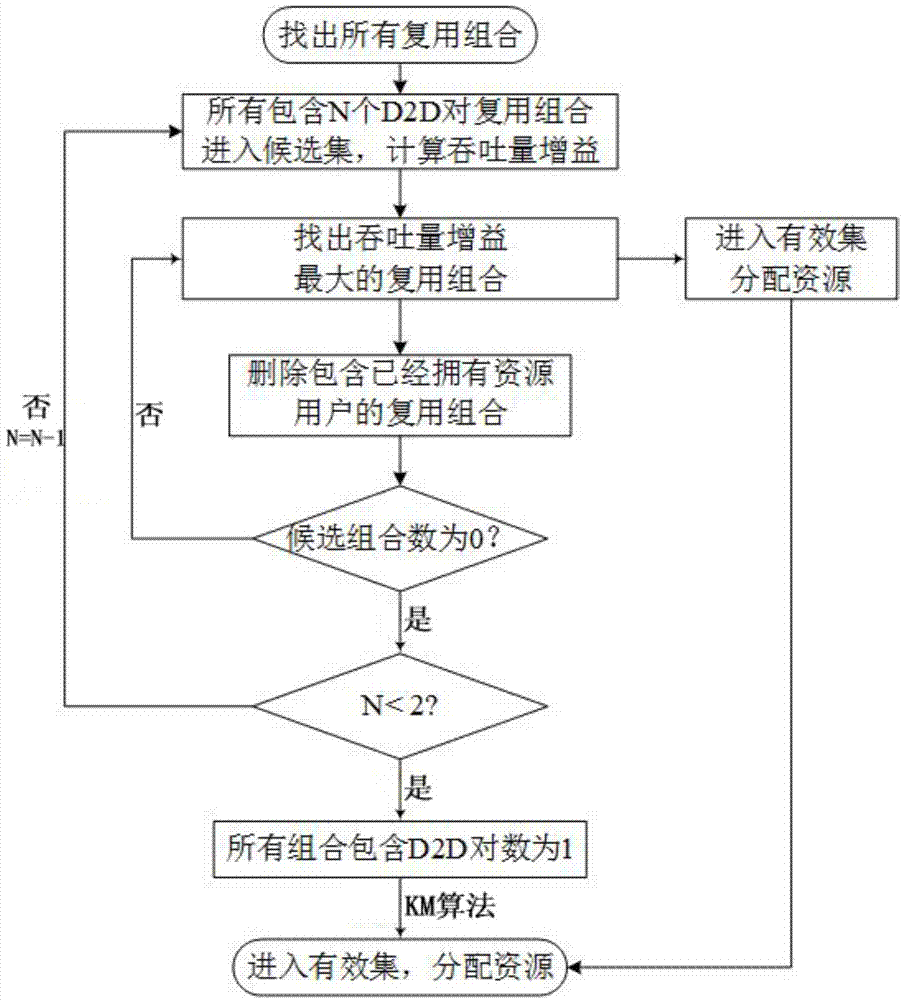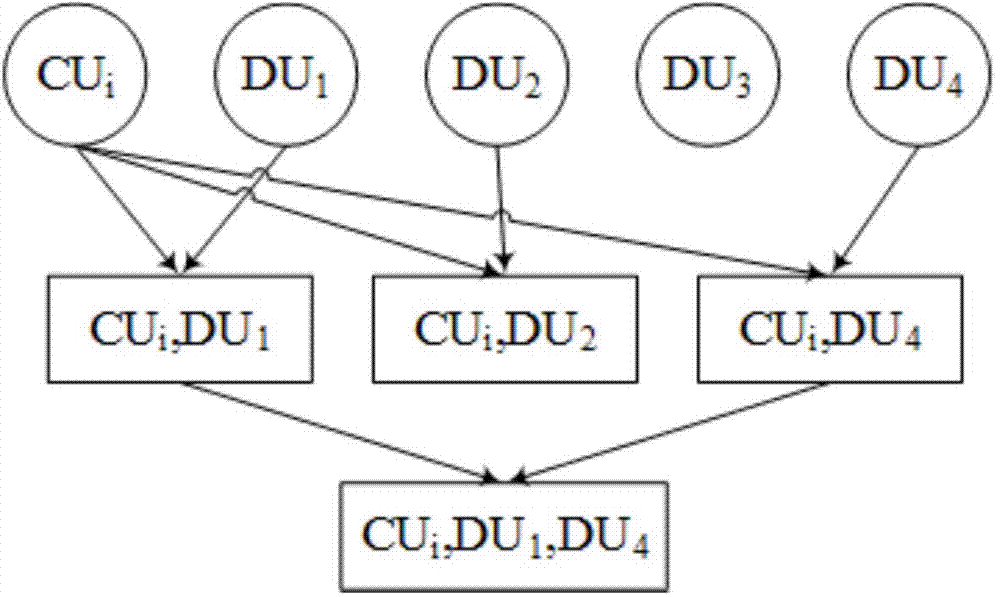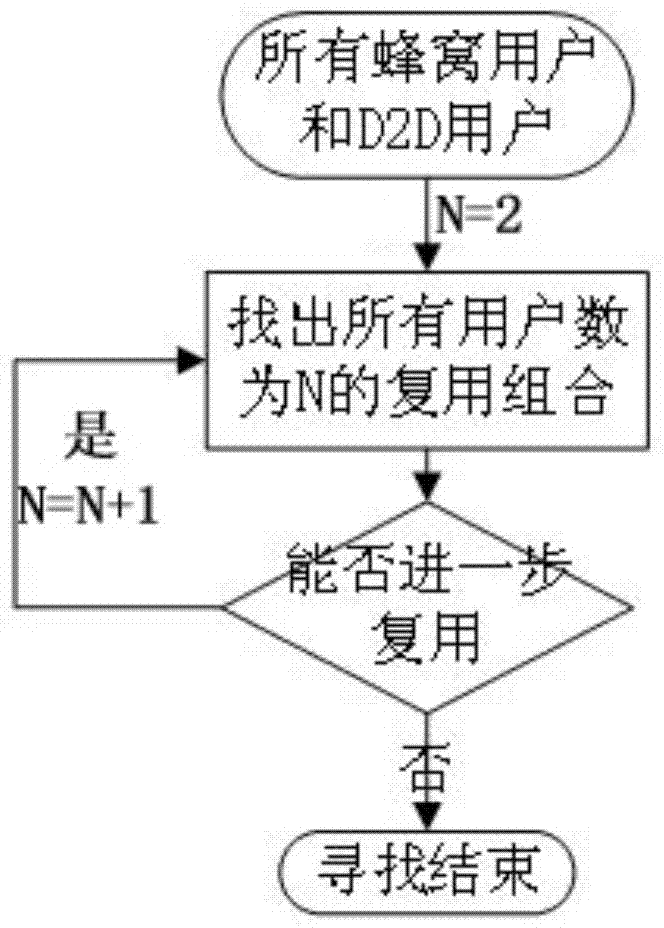A resource allocating method based on terminal direct communication
A terminal direct communication and resource allocation technology, applied in wireless communication, machine-to-machine/machine-type communication services, electrical components, etc., can solve problems affecting normal communication of cellular users, reducing system performance, interference between cellular users and base stations, etc.
- Summary
- Abstract
- Description
- Claims
- Application Information
AI Technical Summary
Problems solved by technology
Method used
Image
Examples
Embodiment 1
[0039] Such as figure 1 As shown, the present invention provides a resource allocation method based on terminal direct communication, the method includes the following steps:
[0040] Step 1: Find all feasible multiplexing combinations;
[0041] The multiplexing combination refers to a collection of cellular users and D2D users that multiplex the same resource.
[0042] Step 2: The number of D2D logarithms included in the multiplexing combination is N;
[0043] The multiplexing combination whose initial value of N is the maximum D2D logarithm included in the multiplexing combination enters the candidate set, and the throughput gain of all the multiplexing combinations in the candidate set is calculated.
[0044] Step 3: Find out the multiplexing combination with the largest throughput gain in the candidate set and enter the active set.
[0045] Step 4: Delete all multiplexing combinations that conflict with the active set to ensure that D2D users and cellular users do not g...
PUM
 Login to View More
Login to View More Abstract
Description
Claims
Application Information
 Login to View More
Login to View More - R&D
- Intellectual Property
- Life Sciences
- Materials
- Tech Scout
- Unparalleled Data Quality
- Higher Quality Content
- 60% Fewer Hallucinations
Browse by: Latest US Patents, China's latest patents, Technical Efficacy Thesaurus, Application Domain, Technology Topic, Popular Technical Reports.
© 2025 PatSnap. All rights reserved.Legal|Privacy policy|Modern Slavery Act Transparency Statement|Sitemap|About US| Contact US: help@patsnap.com



